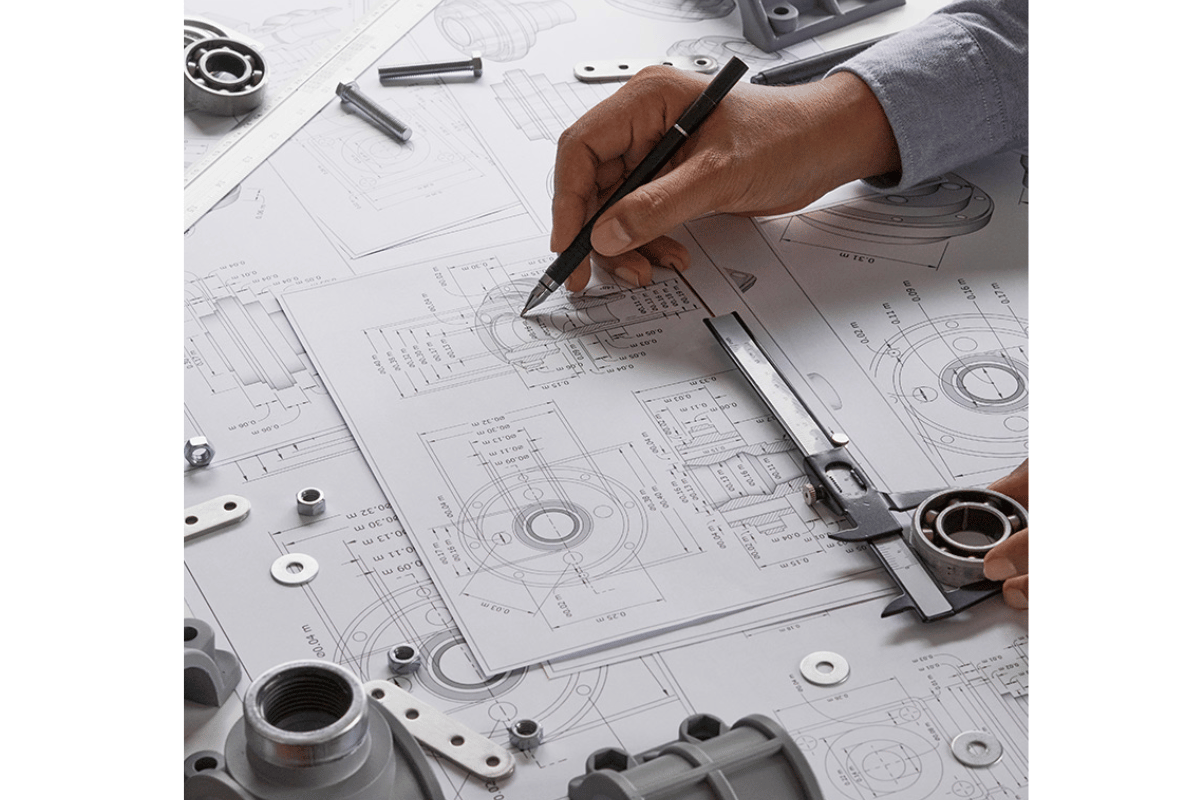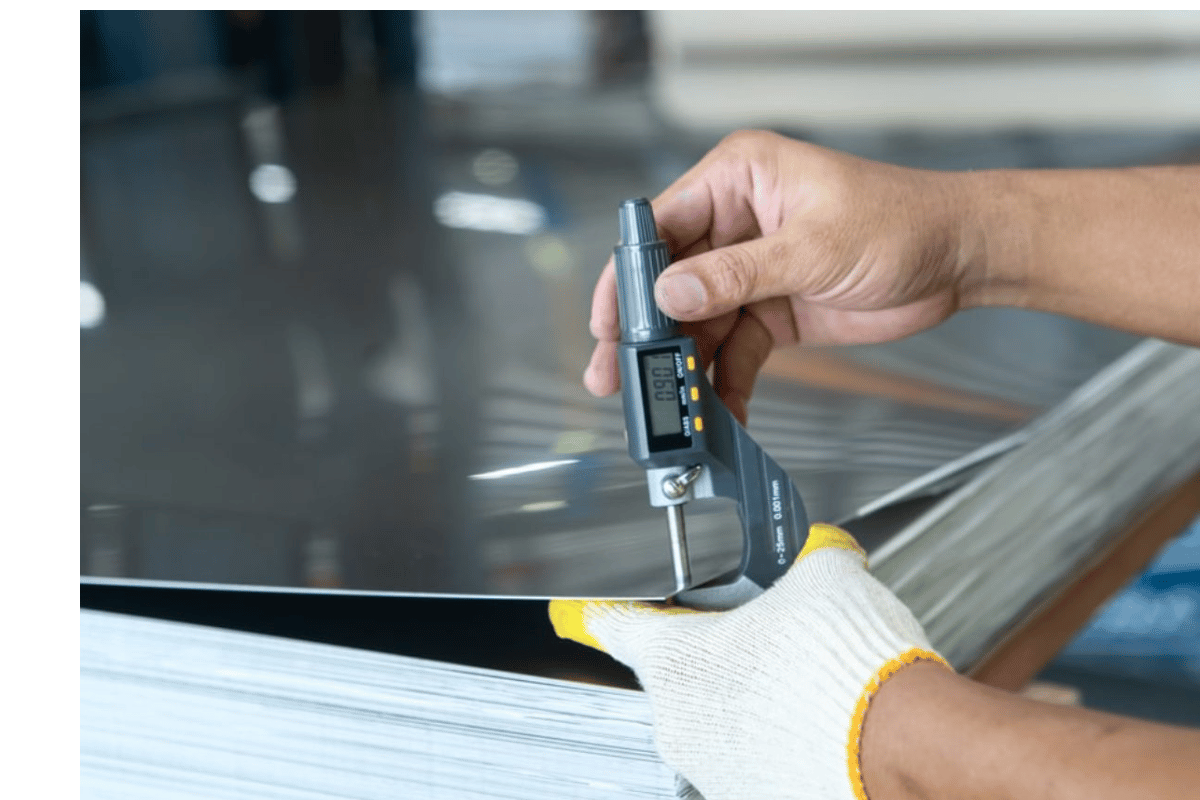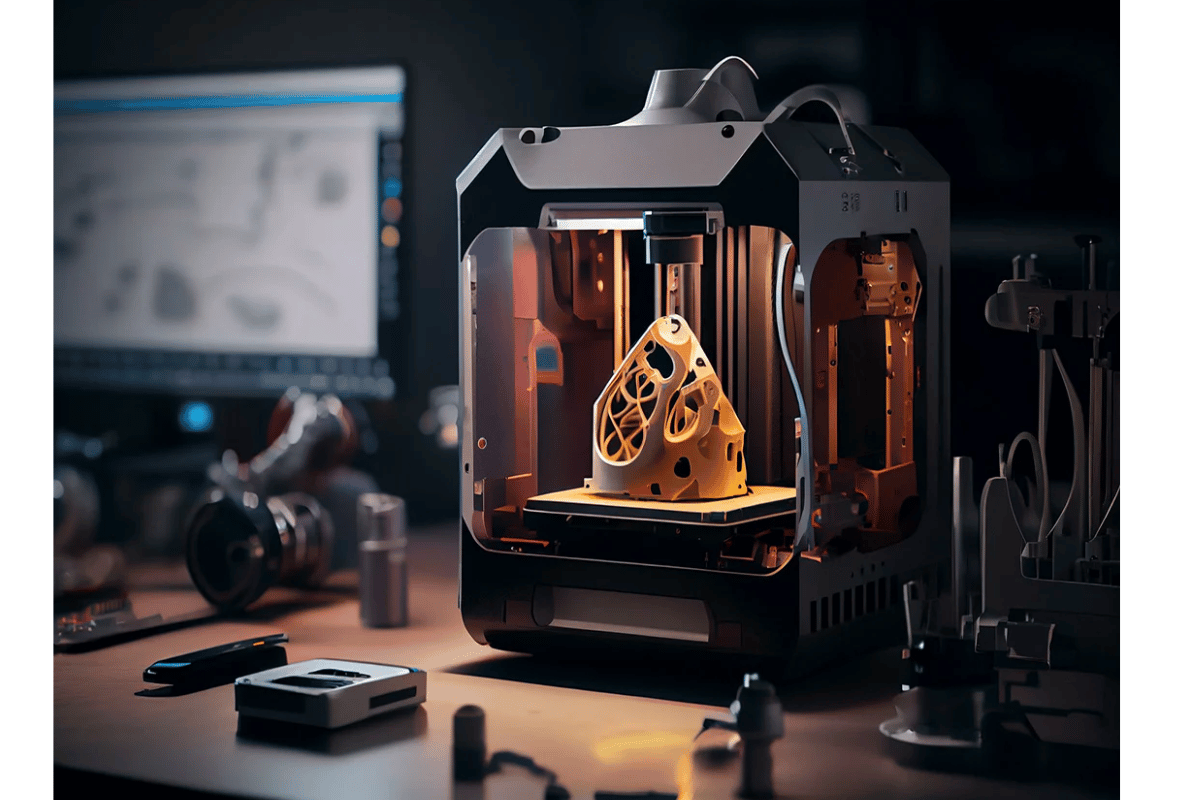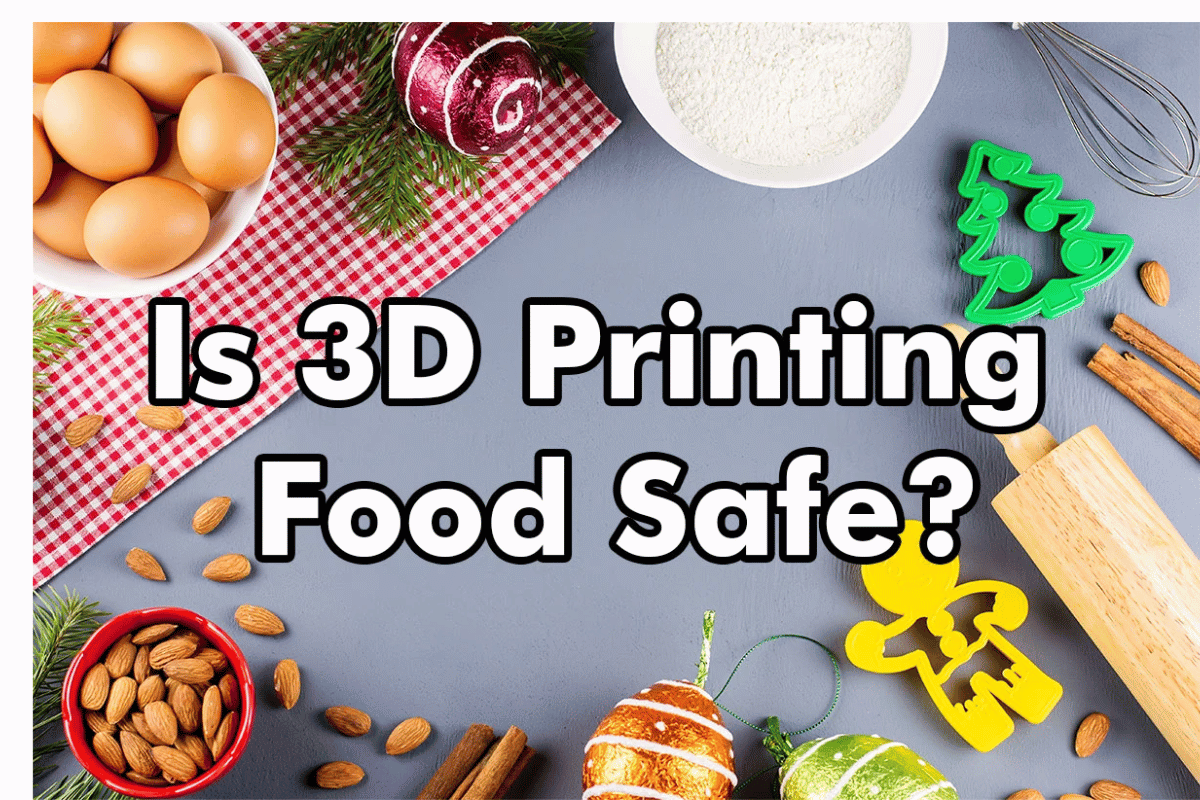3D printing, commonly known as additive manufacturing, has transformed how products are designed, developed, and manufactured. In this innovative approach, digital models are used to build 3D objects layer by layer, giving unmatched opportunities for customization and streamlining the manufacturing process. Other types of additive manufacturing processes that we will be discussing in this blog post include Fused Deposition Modeling (FDM), Stereolithography (SLA), Selective Laser Sintering (SLS), and more. Each of these processes has unique traits, strengths, and applications that suit them to different fields and purposes. Consequently, understanding these various methods will enable readers to appreciate how AM can be applied to their respective projects or business needs, thus helping to shape the future of production and design.
What Are the Main Types of Additive Manufacturing?
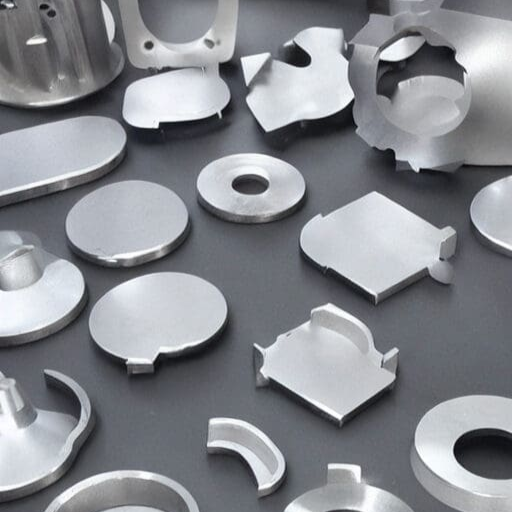
Image source: https://additec3d.com/
The main types of AM processes include:
- Fused Deposition Modeling (FDM): This widespread technique involves melting thermoplastic materials through a heated extrusion nozzle, which then builds up durable parts layer by layer. It is popular for prototyping purposes and low-volume production due to its lower costs compared to other techniques.
- Stereolithography (SLA): SLA uses a UV laser to harden liquid resin one cross-section at a time. Known for its accurate details and smooth finish quality, it is suitable for intricate models and complex geometries.
- Selective Laser Sintering (SLS): Here, laser technology is used to join powdered plastics or metals into solid forms with intricate designs often required for functional prototypes and low-run production parts.
- Digital Light Processing (DLP): Like SLA, DLP utilizes a digital light projector to cure photopolymer resin, but it prints faster than traditional SLA. This provides high-resolution components applicable across several industries.
- Binder Jetting: In this case, layers are formed by depositing a binding agent on powder materials. Due to its capabilities in multi-material printing, binder jetting technology finds extensive applications in metal and ceramic parts where complex structures are required.
These methods each possess their own advantages and are suited for different applications within a wide range of industries.
Fused Deposition Modeling (FDM)
Fused Deposition Modeling (FDM) is a popular 3D printing technique that stands out for its simplicity and affordability. In the FDM method, thermoplastic materials are taken to their melting temperature and then extruded through a nozzle to form layers of a part. This method is commonly used in designing prototypes, hobbyist projects, and small-scale production, as it can rapidly generate functional parts. FDM works well with various materials like ABS, PLA, and PETG; hence, it has different mechanical properties and surface finishes. Additionally, developments in FDM technology, such as better designs for extruders and software, continue to improve its capabilities, making it popular among manufacturers and enthusiasts.
Stereolithography (SLA)
Stereolithography (SLA) is an advanced 3D printing technology known for being accurate and detailed. With SLA, photopolymer resin is selectively cured by layer using focused ultraviolet (UV) laser which results in smooth surfaces and complex patterns. In my opinion, this process is beneficial when manufacturing the industry’s high-fidelity prototypes or components, especially for aerospace, automotive, or healthcare sectors. One of SLA’s best attributes is its ability to create intricate geometries that would be difficult using other methods. Moreover, several resins are available depending on the desired mechanical properties, meaning SLA can be used both for fast prototyping purposes and for making end-use parts that need customization based on these attributes.
Selective Laser Sintering (SLS)
A powerful 3D printing method, Selective Laser Sintering (SLS) utilizes a high-intensity laser to fuse powdered materials into solid structures. The technique involves heating the laser to selectively melt tiny thermoplastic, metal, or ceramic particles spread out in thin layers. One of the significant benefits of SLS is that it can produce robust and highly durable components without using any support structures, simplifying post-processing. With its ability to manufacture functional prototypes and complex geometries, SLS is widely used in the aerospace, automotive, and healthcare industries. In addition, it accepts a wide range of materials, making it more versatile.
How Does Each Type of Additive Manufacturing Work?
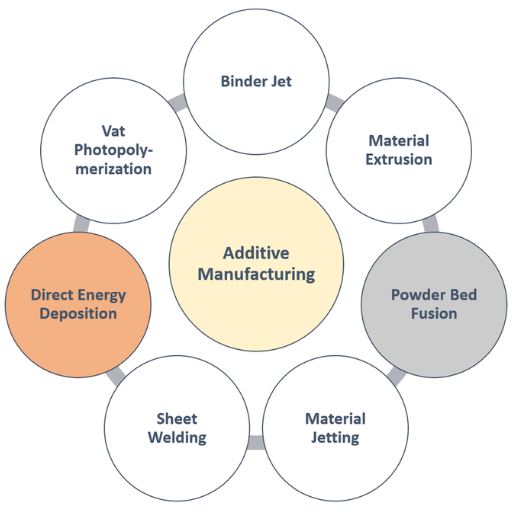
3D printing or additive manufacturing refers to various processes by which items are made layer by layer. Each technique follows its own principles:
- Stereolithography (SLA): This mechanism uses a focused ultraviolet laser to harden layers of photopolymer resin upon curing. As the desired shape, the laser solidifies the resin one layer at a time, thus producing a detailed and smooth prototype.
- Selective Laser Sintering (SLS): In SLS, a high-powered laser fuses powdered materials like thermoplastics or metals by selectively melting particles on thin layers. This process allows for solid parts with complex designs but does not require supporting structures.
These two methods have distinct advantages for specific applications in different industries because they facilitate intricate designs and functional prototypes.
Material Extrusion Process
Material Extrusion, or Fused Deposition Modeling (FDM), is a process whereby thermoplastic materials are layered on each other. Under this method, the filament is pushed through a heated nozzle, which melts and deposits onto the build platform. This deposition process occurs in predetermined patterns, allowing the material to cool and harden, thereby giving rise to the expected fabrication. One of its primary benefits compared to other 3D printing methods is that material extrusion can be quickly adopted; many FDM printers come at reasonable prices. Furthermore, PLA, ABS, and TPU can be employed in this technique, making it suitable for prototyping and manufacturing functional parts. The simplicity of the procedure makes it famous both among professionals and amateurs.
Vat Polymerization Process
Vat Polymerization refers to another 3D printing technology that uses liquid photopolymer resin held in a vat and cured layer-by-layer by ultraviolet (UV) light. In this case, resin submerges a build platform, and UV light directed selectively by either laser or projector makes some parts of it solid, forming needed physical object shapes. For applications requiring complex designs with minute features, this method results in high-resolution components having excellent surface finishes. Stereolithography (SLA) and Digital Light Processing (DLP) are commonplace types of VAT polymerization commonly used for making prototypes, dental works, or jewelry because they have good accuracy levels with smooth finishes.
Powder Bed Fusion Process
A brotherhood of additive manufacturing techniques that selectively join together powdered materials layer by layer using heat generated from a laser or an electron beam is known as Powder Bed Fusion (PBF). This procedure begins with the deposition of fine powder on the build platform, after which this powder is selectively melted at particular points using a focused energy source to take up a specific shape. Once one layer is completed, the platform descends, and another layer of powder is applied, followed by repeating the process until the object is totally formed. It has become popular in PBF because it can make complicated geometries and high-density parts relevant to aerospace, automobile, and medical industries. Some notable methods within PBF include Selective Laser Sintering (SLS) and Direct Metal Laser Sintering (DMLS). These offer different advantages based on the material used or the desired properties that end components will possess.
What Materials Are Used in Different Types of Additive Manufacturing?
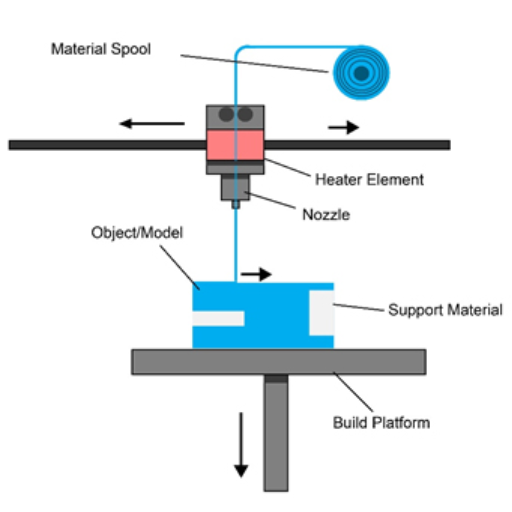
Additive manufacturing accommodates an array of materials adapted for different purposes. Regarding VAT polymerization, they mostly use liquid photopolymer resins that cure under UV light into solid parts. Henceforth, in Powder Bed Fusion, powdered metals such as stainless steel, titanium, and aluminum, depending on the method; e.g., nylon powders are used in SLS, but DMLS works with metal powders. Thermoplastic materials like PLA, ABS, and PETG are used mainly during extrusion, enabling various applications ranging from prototyping to final-use products. Every type of such material has been chosen considering such factors as mechanical characteristics required, thermal resistance, or need for beauty, implying optimum performance oriented toward their respective applications.
Types of Metal Powders
Various metal powders are used in additive manufacturing, each with specific characteristics and purposes. The most common of these can be classified as follows:
- Stainless steel powders: This type is known for its high strength and corrosion resistance; examples include 316L and 17-4 PH, widely used in the aerospace and medical industries.
- Titanium Powders: Some Titanium alloys, such as Ti-6Al-4V, are preferred for their exceptional strength-to-weight ratio and biocompatibility, which make them great for use in aerospace and medical implants.
- Aluminum Powders: Aluminum powders like AlSi10Mg are lightweight and have good thermal conductivity. They are often employed in automotive or aerospace applications where weight reduction is essential.
These particularity processed powders are chosen due to their mechanical and thermal properties by manufacturers so that they can meet requirements specific to individual projects quickly.
Photopolymer Resins
Photopolymer resins play an important role in additive manufacturing, primarily through processes like Stereolithography (SLA) and Digital Light Processing (DLP). These liquid materials solidify when subjected to some wavelengths of light, leading to high-resolution prints full of intricate details. How photopolymer resins have been segmented based on properties, including stiffness, flexibility, and transparency, makes them appropriate for different uses, from dental models to intricate jewelry designs. Furthermore, developments in resin formulas have also given them more capabilities that support better endurance, heat resistance, or biocompatible properties while using them medically. The adaptability, together with the exactness of photopolymer resins, has played a crucial part in the development of the additive manufacturing industry.
Composite Materials
Composite materials are created using two or more constituent materials, resulting in superior properties to those of the individual components. For instance, carbon fiber-reinforced polymers (CFRPs) have exceptional tensile and compressive strengths compared to metals while being lightweight. Despite their lightness, composites can stand up to extreme conditions hence their use in the aerospace, automotive and construction sectors. Recent developments in composite technology include bio-based resins and recycled fibers, which seek to achieve sustainability in manufacturing processes. Furthermore, including intelligent materials within composites that can sense and respond to changes in environmental stimuli represents a new paradigm for materials science, leading to improved functionality and efficiency.
What Are the Advantages of Each Additive Manufacturing Technique?
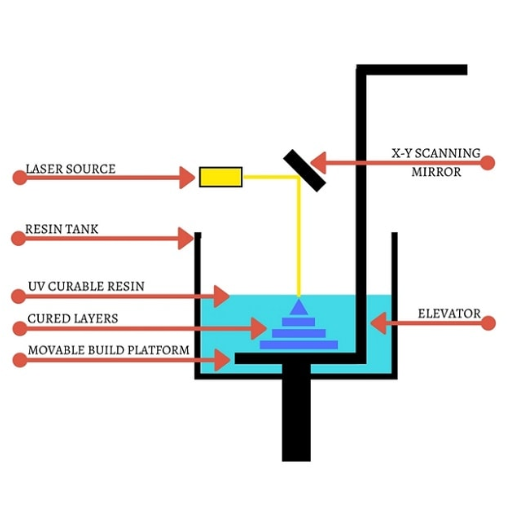
Additive manufacturing techniques such as fused deposition modeling (FDM), stereolithography (SLA), and selective laser sintering (SLS) each offer unique advantages tailored to different applications.
- Fused Deposition Modeling (FDM): FDM is known for its cost-effectiveness and user-friendliness, which make it suitable for both enthusiast-level modeling and professional prototyping. It offers a wide variety of filament options, making it perfect for generating prototypes with functional capabilities as well as end-use parts.
- Stereolithography (SLA): SLA is renowned for producing high-resolution models with fine details and smooth surface finishes. The technique is ideal for delicate dental molds or jewelry designs that require precise layering.
- Selective Laser Sintering (SLS): SLS is excellent at creating strong parts from various materials, including plastics, metals, and ceramics. It greatly reduces post-processing time by allowing the fabrication of objects with complex geometries without the need for support structures, thus enhancing design flexibility.
All these techniques have different advantages, and they are designed specifically according to project needs aimed at elevating additive manufacturing’s capacity across multiple industries.
Advantages of Material Jetting
Material Jetting is a versatile method of 3D printing that has several advantages.
- High Precision and Detail: Material Jetting produces parts with very high precision and detail. It is thus the best method for applications requiring complex shapes and fine surface finishes.
- Multi-Material Capabilities: One of the advantages of material jetting is the ability to print with multiple materials at once. This enables its use in a single print job for multi-material assemblies with different physical and aesthetic properties.
- Fast Prototyping and Production: This technology promotes rapid prototyping and functional part production within a fraction of the time compared to traditional manufacturing processes by allowing designers to make quick iterations.
- Excellent Surface Quality: Material Jetting products have excellent surface quality, which results in reduced post-processing. Hence, it is advantageous when aesthetics and user experience are considered in an end-use application.
In general, Material Jetting enhances the design freedom and functional capabilities of additive manufacturing in industries such as automotive or healthcare.
Advantages of Binder Jetting
Another additive manufacturing innovation is binder jetting, which has its advantages.
- Material Versatility: One key benefit is that it can work with a wide array of materials, including metals, ceramics, and plastics. This flexibility allows one to choose the suitable material for specific applications without confining oneself to a single type.
- Cost-Effective Production: Binder Jetting tends to be more cost-effective when producing large parts or high volumes, especially compared to conventional methods. Therefore, it becomes an attractive choice for projects with financial limitations.
- Complex Geometries: The technique is excellent at generating intricate designs involving complex geometries, which may prove difficult or impossible using other methods. This ability helps me experiment with innovative ideas and explore new design horizons.
- Reduced Waste: Because it operates on a layer-by-layer basis, employing only necessary amounts of material, binger jetting creates minimal waste. This feature aligns perfectly with principles of sustainable manufacturing that promote environmental accountability.
In summary, Binder Jetting boosts flexibility, effectiveness, and sustainability in 3D printing, making it suitable for various sectors.
Advantages of Directed Energy Deposition
Additive Manufacturing (AM) is a technology that manufactures products by adding material layer upon layer until the required shape has been formed.
- High Material Efficiency: The utilization rates of materials in the DED process are usually more significant than those found in traditional manufacturing systems, which means they can be used to repair metal parts cheaply. In this case, more initial raw material yields the end product.
- Fast Repair Capability: One of the key distinguishing features of DED is its ability to restore and add new material to the existing components quickly. Carrying out such repairs promptly helps to minimize downtime, especially in sectors such as aerospace and automotive, where downtime is very costly.
- Applications in Various Fields: This technique covers different categories of materials, such as metals and composites, and can be utilized for both small-scale and large-scale production processes, hence facilitating flexible production capabilities.
- Ease of Production: This technique manipulates lasers, making extremely intricate geometries and customized parts that could be difficult to make using conventional machining methods possible. This technique calls for creative design solutions targeting specific industrial needs.
Incorporating these advantages into AM enables industries to achieve sustainability, operational efficiency, and design freedom in various sectors of manufacturing practice.
How Do Additive Manufacturing Technologies Compare to Traditional Manufacturing?
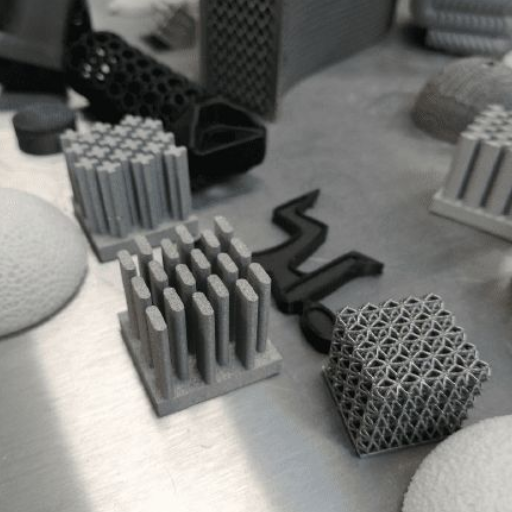
Regarding traditional manufacturing, additive manufacturing (AM) technologies and DED fundamentally differ. Traditional Manufacturing Techniques usually involve removing materials to make finished parts, unlike AM, which goes through a series of layers resulting in components. In this way, AM can increase the design flexibility and create complex geometries that cannot be realized using conventional methods due to their cost or impossibility. Additionally, because these processes typically need less material, they help generate less waste while improving sustainability. On the other hand, there are situations where high-volume production may still find traditional manufacturing quite helpful in terms of time and ability to replicate simple designs with rapid speed. To sum up, AM versus other techniques for developing anything relies on factors such as product volumes, design complexity, and material needs.
Speed and Efficiency
Several factors must be considered when comparing Directed Energy Deposition (DED), an example of additive manufacturing technology, against the normal manufacturing terming speed and efficiency. Complex part lead times can be considerably reduced using AM since many users find it advantageous because, unlike through-holes, it does not require secondary machining operations, allowing for faster turn-around times on prototypes and small batches than conventional methods. This type of traditional production made in large volumes is excellent, and many units can be produced within a short period due to the use of scientific equipment.
3D printing brings excellent versatility and fast iteration cycles for innovative product shapes, but there are times when mass-production speed remains more critical than anything else, especially under simpler geometries. This is true about quickness rather than anything anything else which makes this approach pretty mediocre at best or downright slow at worst yet others would claim that 3D printing even has its downsides. Knowledgeable stakeholders say that engineers continue using old-fashioned methods since they work well even in today’s 21st century while dealing with simple objects like cubes or spheres and simple shapes that require excessive speed for the fastest mass production. A good decision here depends on project objectives and specifications.
Cost-Effectiveness
For me, the cost-effectiveness of additive manufacturing (AM), as opposed to traditional manufacturing, depends on the particulars of my project. In situations with less production volume and highly customized parts, AM often wins against high unit costs because it eliminates the need for extensive tooling and set-up time. On the other hand, traditional manufacturing may be preferable whenever there is a potential for producing large volumes of units such that initial investments can be spread over many units, thus reducing cost per unit. Consequently, I consider factors such as the extent of production, complexity of designs, and cost of materials to decide which method suits my budgetary requirements and production needs best.
Design Flexibility
Additive manufacturing (AM) has greater design flexibility than traditional manufacturing methods. It makes it possible to produce complex geometries or intricate arrangements that would not have been achievable by conventional techniques. This ability allows designers to explore new ideas and optimize designs based on performance, weight, and material utilization. Furthermore, AM supports rapid prototyping, enabling quick iterations or modifications based on testing results or feedback. However, many design changes necessitate significant retooling or modification before they can be produced through traditional manufacturing, thus increasing lead time and costs, respectively. Consequently, some companies that want to remain at the cutting edge find this aspect crucial while deciding how to produce things using additive manufacturing technologies.
How Is Additive Manufacturing Used in Various Industries?
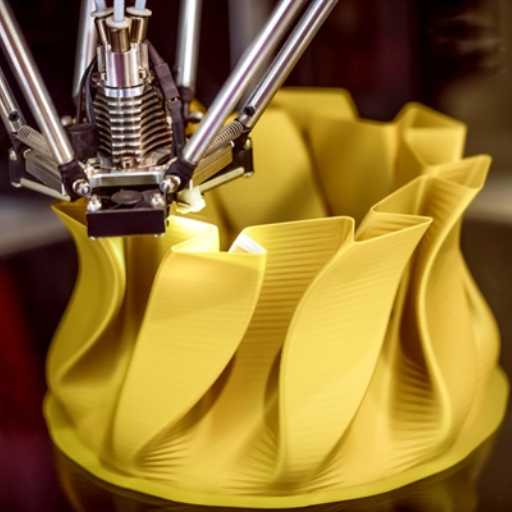
In different sectors, additive manufacturing (AM) has become popular due to its flexibility and dynamic nature. AM is used in the aviation industry to create lighter parts that improve fuel efficiency and increase performance. AM enables manufacturers to design and test early prototypes in the car manufacturing sector, leading to faster product development from concept to market. The healthcare system uses 3D-printed custom implants and prosthetics for personalized treatment solutions. Additionally, AM is applied in the consumer goods sector to make customized products or limited editions for a particular target market segment. It helps these industries be innovative and more efficient.
Aerospace Industry Applications
Additive manufacturing (AM) has transformed aerospace by enabling the production of complex geometries hitherto impossible through any other process. A critical application is lightweight component manufacture, such as brackets and housings, which contribute to improved fuel efficiency and reduce emissions. Boeing, Airbus, and others are integrating AM technology to significantly reduce weight while meeting stringent safety requirements for aircraft components. Besides, AM enables rapid prototyping coupled with testing new designs, thereby considerably cutting down lead times and tooling needs. For this reason, aerospace manufacturers can respond rapidly to changing design requirements, continuously innovating themselves.
Automotive Industry Applications
The automobile sector is a part of technology manufacturing that has witnessed the most innovative strides in recent years with the help of additive manufacturing (AM). I encountered AM used to create lightweight parts that enhance vehicle performance and fuel efficiency as I delved into this exciting area. This facilitates rapid prototyping of components, enabling companies like Ford and General Motors to test and fine-tune their designs more quickly. Moreover, AM assists in producing customized elements such as dashboard layouts or interior fittings for specific end-users’ demands. Consequently, this technology has become a game changer within the automobile industry by minimizing material wastage and reducing production expenses.
Medical and Dental Industry Applications
In health care, including dental care and orthopedics, AM allows for the production of patient-specific products that are known to improve patient outcomes. About orthopedics, it enables the personalization of implants and prosthetics that fit the unique anatomy of patients, leading to better fit and function. Surgeons can also benefit from anatomical models created through AM for pre-surgical planning, thus enabling more accurate surgeries.
Using traditional approaches, dental crowns, bridges, and other orthodontic devices are made with less precise fitting than those produced using the Additive Manufacturing (AM) method. Aside from speeding up manufacturing, this technique supports intricate designs, enhancing cosmetic value. Thus, integrating AM into medical and dental fields will revolutionize the provision of healthcare services through improved treatment outcomes and effective care pathways for patients.
Frequently Asked Questions (FAQs)
Q: How does sheet lamination work in additive manufacturing?
A: Sheet lamination involves bonding sheets of material layer by layer using heat and pressure, or ultrasonic welding, to create a 3d object. Laminated object manufacturing and ultrasonic additive manufacturing are examples of this process.
Q: What materials can be used in additive manufacturing?
A: Various materials can be used in additive manufacturing, including plastics, metals, ceramics, and composites. The choice of material depends on the specific additive manufacturing method and the desired properties of the final product.
Q: What are the advantages of additive manufacturing over traditional manufacturing methods?
A: Additive manufacturing offers several advantages, such as reduced waste, the ability to create complex geometries, customization, shorter lead times, and the potential to reduce costs by minimizing material use and simplifying the supply chain.
Q: How does Direct Metal Laser Sintering (DMLS) work?
A: Direct Metal Laser Sintering (DMLS) uses a laser to fuse powdered material layer by layer to build metal parts. The powdered material is spread across a build platform, and a laser selectively melts the powder to form each layer of the 3d object.
Q: What is the difference between additive manufacturing and subtractive manufacturing?
A: Additive manufacturing builds objects layer by layer, adding material only where needed. On the other hand, subtractive manufacturing starts with a solid block of material and removes material to achieve the desired shape. Additive manufacturing can reduce waste and enable more complex designs.
Q: What are the main categories of additive manufacturing technologies?
A: The main categories of additive manufacturing technologies include Vat Photopolymerization, Material Jetting, Binder Jetting, Powder Bed Fusion, Direct Energy Deposition, Sheet Lamination, and Material Extrusion. These categories encompass the various methods of additive manufacturing used to create 3d printed objects.
Q: How is material use optimized in additive manufacturing?
A: Material used in additive manufacturing is optimized by depositing material only where needed to build the object layer by layer. This reduces waste compared to traditional subtractive manufacturing methods, which often involve removing excess material.
Q: What are some typical applications of 3d printing in manufacturing?
A: 3d printing is used in various manufacturing services, including prototyping, tooling, and production of end-use parts. It is commonly used in aerospace, automotive, healthcare, and consumer goods to create complex, customized, lightweight components.



